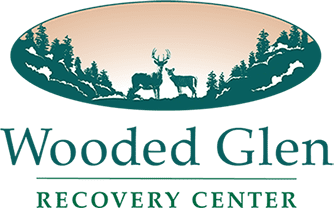We do everything we can to avoid feeling pain. We take something for our headache. We rub ointment on sore muscles. We keep the ice packs and heating pads handy. After all, pain is no fun. But most of the time, it’s temporary, and we have safe means to lessen its intensity and duration.
Battling Chronic Pain
But according to experts, 20 percent of people battle chronic pain. That’s one in five people. And that statistic is shocking all on its own. But unfortunately, that’s not the end of the story. In fact, there is a direct link between chronic pain and substance use disorders. If you are suffering from chronic pain and you are susceptible to issues surrounding substance use, addressing this connection is absolutely essential for preserving your sobriety.
The Problem with the Pain
People suffering from chronic pain often face a number of ongoing challenges. These include:
- Ongoing problems with sleep, leading to persistent low energy
- Challenges at work, which can lead to financial pressures
- A lack of interest in social events, which can undermine important relationships
- Increased levels of depression, anxiety, and overall stress
- Reduced clarity of reasoning, cognition, and judgement
Taken together, these problems can truly upend a person’s life, which makes the connection between substance use disorders and chronic pain fairly easy to understand. The quest for relief from the ongoing pain can lead to decisions a person otherwise might not make.
Easing the Pain Can Come at a Heavy Cost
As noted above, we can easily understand—and sympathize with—a person who is looking for relief from seemingly inescapable pain. But that desire for relief can be a trap if it leads a person down the road toward misuse of drugs—whether those drugs are legal or illicit. Whether it is opioids or alcohol or some other substance, attempts to deal with chronic pain can lead to addiction issues that are difficult to overcome—essentially trading one problem for another.
Watching for the Warning Signs
In the grip of chronic pain, it may be difficult to fully realize the lengths you might be going to in order to reduce your discomfort. It is important, however, to be aware of the signs of potential substance use disorders:
- Seeking prescriptions from more than one doctor or increased doses of current medications
- Mixing pain meds with illegal drugs or alcohol
- Feeling defensive or withdrawing from friends and family to avoid talking about substance use
- Significant changes in hygiene habits or in mood and behavior
If you recognize these signs in yourself (or in a loved one), it is time to change course.
Finding a Third Way – Lessening Pain While Avoiding Reliance on Drugs
The connection between chronic pain and substance use disorders might seem like the proverbial choice between the devil and the deep blue sea. It might seem as if there is no good choice to make and that you will be trapped in a never-ending cycle: pain, trying to escape pain, addiction, trying to recover from addiction.
But there are alternatives. A care team can personalize a plan that allows you to manage pain without relying on drugs—legal or illegal. Some of the many options and ideas include:
- Eating with intention: A Mediterranean diet focused on fresh fruits, leafy veggies, whole grains, fish, and olive oil might lessen pain while contributing to better overall health.
- Plugging into the energy: There is some evidence to suggest a variety of alternative approaches, like reiki, qigong, acupressure, and acupuncture, can provide relief from pain.
- Sleeping seriously: Stop just hoping you will fall asleep and get serious about creating the proper conditions for rest, including reducing caffeine intake and screen time as well as sticking to a sleep schedule.
- Improving the environment: Less clutter, dedicated space for relaxation, and soothing, appealing features in your work or living space can lead to less pain.
- Making the move to the massage table: A massage (or chiropractic care) can improve circulation, release tension, and increase mobility.
- Being mindful: Taking control of stress responses via mediation, mindfulness, guided imagery, and similar techniques can support pain management.
- Moving (or even grooving): Some chronic pain may be addressed through physical therapy, Pilates, tai chi, or even dance. Endorphins released as you exercise will block your body’s pain signals.
- Meeting with the gang: Your family and friends can provide you with much needed support, and that emotional bond can help you manage your pain over time.
An Opioid Agreement – Protection When Medication is Mandatory
In some cases, medication is simply going to be the best option for addressing chronic pain. Managing that medication via an opioid agreement can help ensure your sobriety isn’t threatened. The agreement between a person in recovery and his or her doctor makes clear the ways in which the medication can be used safely, which may include committing to using only one pharmacy, allowing a family member to dispense the medication, or agreeing to regular drug testing. With these protections in place, a person in recovery can more confidently combat both chronic pain and a substance use disorder.
Protecting Your Sobriety While Reducing Your Pain
At Wooded Glen Recovery Center, we are fully equipped to help you or your loved one effectively manage chronic pain while reducing the risk of relapse. It can be a tricky balance, but we have the expertise, resources, and compassion necessary to help you overcome the challenges you face.
Sources:
psychologytoday.com/us/blog/mindfulness-in-frantic-world/201501/can-mindfulness-meditation-really-reduce-pain-and-suffering

